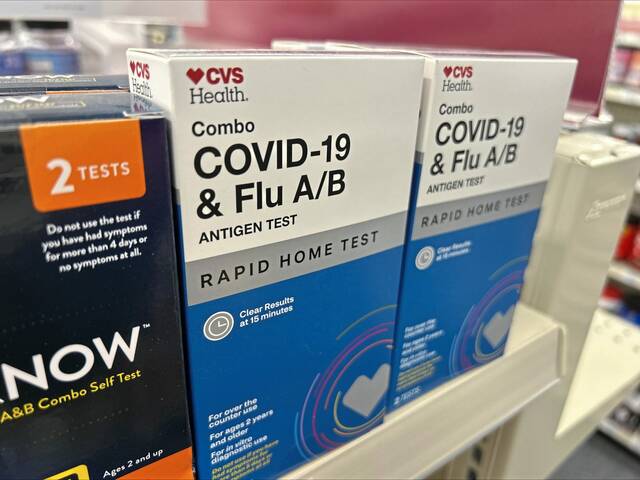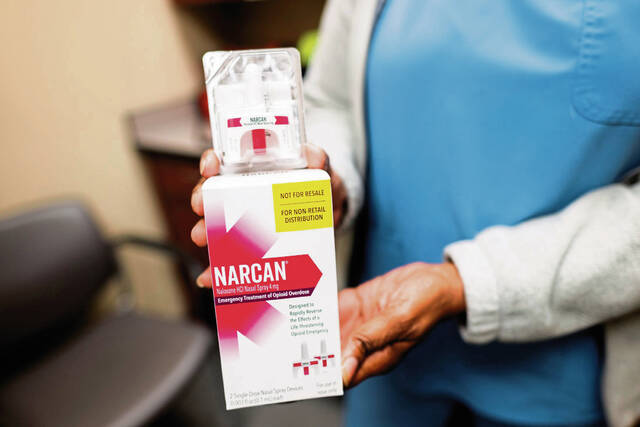When covid-19 struck Western Pennsylvania last March, Highmark Health CEO and President David Holmberg said he and fellow executives braced for the worst.
They weren’t sure just how overwhelmed their providers might get, or how much money and other resources it would take to keep operations going as outbreaks proliferated.
A year into the pandemic, however, Holmberg says Highmark Health retains a strong financial position and remains poised to grow.
The nonprofit system reported Monday raking in $18 billion in total revenue in 2020, including an operating gain of $490 million — more than double the $241 million gain reported in 2019.
“We were hunkered down for a brutal year, and certainly from a clinical standpoint there have been some extraordinary successes and some extraordinary losses, but we are pleased with the overall financial performance of the organization,” Holmberg said. “Highmark was built to withstand a pandemic.”
Patient volume up, covid cases down
After plummeting by 50% in March and April, when non-urgent procedures were postponed, patient volumes have returned to nearly pre-pandemic levels in recent weeks.
At its covid peak in early December, Highmark’s Allegheny Health Network facilities were treating more than 395 people with the coronavirus disease — nearly 100 of whom were in intensive care unit beds. This week, the 13-hospital system’s covid patient census stands at 68.
The network treated more than 5,600 hospitalized covid-19 patients, and 650 patients died of the disease at AHN facilities.
Highmark pressed on with major construction projects last year, including four new mini-hospitals in Harmar, Hempfield, Brentwood and McCandless. In June, it inked a major affiliation with HealthNow New York Inc., which, after regulatory approval, will add about 1 million New York members to the insurance roll.
Holmberg credits Highmark’s diversified arms of businesses — including its insurance membership as well as investments in dental care, medical technology and stop loss coverage — with stabilizing the organization’s bottom line amid so much uncertainty.
Insurance gains make up for hospital downturns
Like Pittsburgh-based competitor UPMC, Highmark controls both provider and insurance arms. The setup is aimed to align incentives and allows organizations to offset losses on the hospital side by gains in the insurance side; when people get less treatment, insurers have to make fewer payouts.
RELATED: Despite pandemic, UPMC rakes in record-high $23.1 billion in 2020 revenue
After three years in the black, Highmark’s provider arm, Allegheny Health Network, reported a $136 million operating loss, for a $180 million decrease from 2019. AHN spans more than 2,500 physicians across its hospitals and ambulatory, outpatient and health and wellness centers across the region.
The system’s hospitals saw steep drops in the spring, with appointments picking back up in the second half of the year and in recent weeks. Through the end of 2020, AHN reported an overall 9% drop in inpatient discharges and observations, a 7% drop in physician visits and a 2% drop in outpatient registrations.
But over the same period, Highmark Health Plan reported a $400 million operating gain.
Highmark’s insurance rolls have grown to more than 5.6 million members, and the organization boasts a 95% retention rate in Western Pennsylvania. Commercial plans dipped slightly amid layoffs during the pandemic but have been picking up, officials said. So have Medicare and Medicaid memberships in not only this region but also in West Virginia and Delaware.
“We’re very fortunate that Highmark Health is a national company, and we have multiple businesses in different segments. We’re able to take those resources and the success and bring it back to the four states that we operate in,” Holmberg said. “That’s why the organization is built the way that it is, is so that we’ve got those revenue streams. Others (providers) that don’t have that, or lack the geographic flexibility or distribution, I think are going to have a more difficult time.”
‘Telehealth is here to stay’
More than 500,000 telehealth appointments were scheduled across Allegheny Health Network last year — a 5,000% increase from 2019, Highmark reports.
“Telehealth is here to stay,” Holmberg said.
The network waived many copays and shared or additional costs associated with telehealth appointments at least through this summer.
Even as vaccinations ramp up and covid becomes less of a public health threat, officials expect virtual appointments to remain part of the new norm, a major industry shift. Goals include expanding virtual appointments offered by specialty care providers.
“We were forced into doing it last year, and, thankfully, it worked out really well for the patients and for the providers. The providers embraced it,” said Cynthia Hundorfean, CEO and president of Allegheny Health Network. “And as we’ve started to return to more normal activity, we’ve made sure that we’ve locked this into the practices, that this is what we’re going to do going forward. Patients have enjoyed the fact they don’t have to leave home to get great care.”
Revenue on rebound since Visionworks sale
Though on the rise, Highmark’s total revenue and net operating gain are down in comparison to a few years ago, prior to Highmark’s 2019 sale of Visionworks. The eye care business had been generating $1.1 billion.
“What selling Visionworks did for us was put us in a position where we had ample capital to be able to make other investments,” Holmberg said. “Specifically AHN, but also on the technology platform, and now with the approval of the affiliation for HealthNow, we’ll be back, I suspect, close to $22 billion, plus or minus, and it’ll be our core business, so we’re very pleased with that.”
Federal assistance in the form of CARES Act grants and deferred payments — though welcomed during covid spikes — “wasn’t that big of a help” from a year-end operating margin perspective, according to Highmark Chief Financial Officer Saurabh Tripathi. The bulk of the $300 million in assistance awarded to Highmark aimed to offer immediate liquidity and must be repaid.
Highmark’s net assets now top $9 billion, up from $7.6 billion in 2019.













